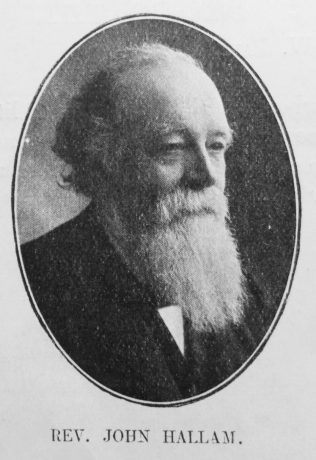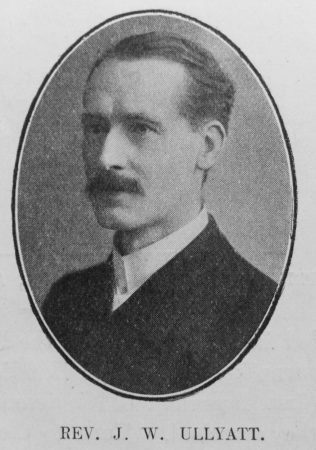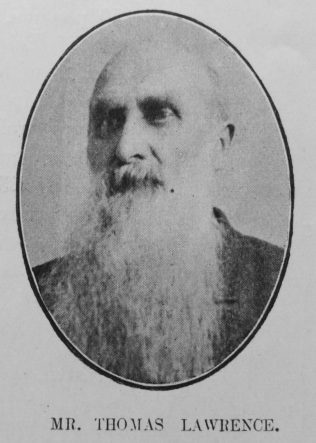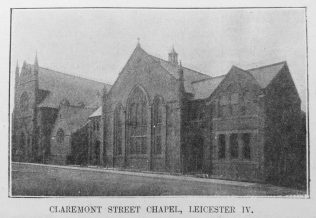Leicester Primitive Methodism
















Transcription of Article in the Primitive Methodist Magazine by Rev. E.W. Pape
After some days of rumour and expectancy, on Sunday, March 1st, 1818, the cry passed from lip to lip of the townsfolk of Leicester, “The Ranters have come!” Men, women, and children, curious and excited, flocked into Belgrave Gate, where at the Old Cross, a little company of people from Syston, Thurmaston, and adjacent villages, were holding a religious service. These militant Christians had been led into the town along the Melton Mowbray turnpike, by George Handford, of Sileby, (first President of Conference), singing as they marched, “Turn to the Lord and seek salvation.” The preacher was John Benton, who had previously missioned many of the villages in the north of the County, and who had hitherto shown a strange reluctance to enter Leicester itself; but now constrained by the Spirit, and impelled by circumstances, he took his stand in the very centre of the County Town, and literally “cried aloud, spared not, lifted up his voice like a trumpet, and declared unto the people their transgressions.”
In that crowd were many who were convicted and converted under the powerful sermon delivered by Benton, notably amongst them, William Goodrich, who in the “Pied Bull,” the night before, had, in a discussion of the merits and demerits of the so-called ‘‘Ranters,” “interposed a word or two in their favour,” and had thereby drawn from the landlady the sneering prophecy, “and you, Goodrich, will be a ‘Ranter’ too, directly” William Goodrich subsequently became an outstanding figure not only in Leicester Primitive Methodism, but in a much wider sphere. He was at one time the leader of four large Society classes, was a most acceptable local preacher, a self-denying, untiring missionary, an efficient poor man’s lawyer, and it is more than probable that he was for some months the editor of the first Primitive Methodist monthly magazine. Thus was Leicester “opened up” by our fathers, and the seed of a sturdy growth, and of an abundance of fruit planted in congenial soil. Leicester, with two open-air preaching places, was almost immediately attached to the Loughborough Circuit. Two services were held simultaneously in different parts of the town, and amongst the first preachers we find such men of merit and fame as William Clowes, J. Wedgewood, G. Handford, T. King, and even Lorenzo Dow.
From these small and unpretentious beginnings has been evolved, during the course of less than ninety years, the Leicester Primitive Methodism of today. This is only partially represented by the following figures, for no reckoning can be made of what has been given to surrounding circuits, and to other churches. There are now in the Borough of Leicester, 1,467 members, and 4,775 Sunday School scholars, 13 chapels valued at £48,420, with sitting accommodation for 6,306 hearers. In the four Leicester Circuits, and including Highfields Mission, there are 10 ministers in active work, 2,315 members, and 6,233 Sunday School scholars, there are 28 chapels, valued at 61,570, with sitting accommodation for 9,888 hearers. “What hath God wrought!” The stages of this remarkable development that are most clearly marked, are chapel purchase and building, and circuit extension and division; for every such project has been a stimulus to fresh effort, and this has brought greater success.
The first “Primitive Tabernacle” was a little chapel that formerly belonged to the Wesleyans in Millstone Lane. It was probably rented for the winter months, when outdoor services were often impracticable. Then George St.- ever sacred and famous in the annals of Leicester Primitive Methodism, – was built, under conditions around which there hovers quite a halo of romance. The members were all poor people, but their poverty was compensated for by courage and faith and energy that were truly wonderful. They erected their Zion by instalments; digging the foundations themselves, purchasing materials, and paying workmen as they were able, and begging anything and everything from all likely sources. The story of how money was raised for the windows, is worthy of repetition and immortality. Squire Day, of Thurmaston, was solicited by William Goodrich and another, for a contribution. In a spirit of roguishness, or thinking to rid himself of his importunate petitioners, he offered them a tree that was lying on his estate, on condition that they would drag it to Leicester by manual labour alone. Much to his surprise, his challenge was accepted, and the following Saturday, by the aid of a pair of wheels, the tree was successfully hauled by many willing hands the three or four miles to town, and deposited in a wood-yard on the site of the present Belgrave Gate Chapel, after one of their number, using the tree as his pulpit, had preached in front of Mr. Day’s residence from the text,- “Now also the axe is laid to the root of the trees, and every tree therefore that bringeth not forth good fruit is hewn down, and cast into the fire.” The tree was sold for £7, and the windows paid for. George Street Chapel, – opened on Christmas Day, 1819, with James Bourne as preacher, – became the home of a numerous and vigorous Church, and the birthplace, and Christian training school of many zealous and gifted men and women, who have left their mark bon our Church history.
The first extension of the good work carried on at George Street, was the purchase in 1829, of Alexander Street, commonly called the ‘Friars Chapel,” named from the locality where it was situated. This building had belonged to a community of Independent Methodists, and William Key, to whom Leicester Primitive Methodism owes much, appears to have been taken over with the chapel. He was a valuable asset, and made the £250 paid for the property, a very profitable investment. It was here while John Verity was preaching, that a temporary gallery, erected to provide more room for this event, collapsed, but fortunately there were no casualties. This little sanctuary of four plain walls, and no vestry, and seating about 150 persons, was the Mother of Leicester Second Circuit, with its present membership of 1,200, its scholars’ roll of nearly 4,000, and property valued at nearly £30,000.
The next enterprise was the erection of a chapel in York Street, in 1840. This scheme was launched during one of the most distressing periods of Leicester’s history, when the terrible economic conditions under which the people lived and worked produced the Chartist agitation, and of which Leicester, with its Thomas Cooper, became a chief centre of operation. The trustees of York Street were soon in financial difficulties, and the property, including four cottages, had to be sold, but mainly through the good offices of William Key, the chapel, without the houses, was reconveyed by the purchaser to the trustees, at a nominal sum. This was a time of great stress and strain for our Church in Leicester, bravely faced and endured
The first division of the Leicester Circuit was the formation of the York Street Branch, jn 1852, which became Leicester Second Circuit, the following year. Twenty years later an event that has had far-reaching consequences took place. Alexander Street and York Street united to purchase the “Ram
Inn,” in St. Nicholas Street, and on the site they were superseded by the old St. Nicholas Street Chapel. The foundation stones were laid on Good Friday, 1875, and the chapel was opened the following November. This place was pulled down in 1899, for street widening purposes, but the building has been re-erected in its original form on the Fosse Road; whilst the Society is perpetuated in the beautiful and spacious church and schools on Hinckley Road – the Conference Church.
The “opening up” of “New Leicester,” with the erection of Curzon Street in 1860, and the formation of Leicester Third Circuit, with Curzon Street as its head, in 1874, marked another era in the advance of Primitive Methodism in the town.
The fine church, with its imposing front in Belgrave Gate, is the direct successor of old George Street, and is therefore the home of many most inspiring traditions, and with it is associated much healthy sentiment.
Later developments, are the formation of Leicester Fourth, with Claremont Street at its head, where are the beautiful memorial schools, the gift of Alderman S. Hilton, J.P., and the working of Highfields, by the General Missionary Committee, and the appointment, as pastor, of Rev. John Hallam, whose wise administration and diligent oversight has borne much fruit, in surmounting the financial difficulties, and consolidating the various interests of that church.
References
Primitive Methodist Magazine 1907/529





No Comments
Add a comment about this page